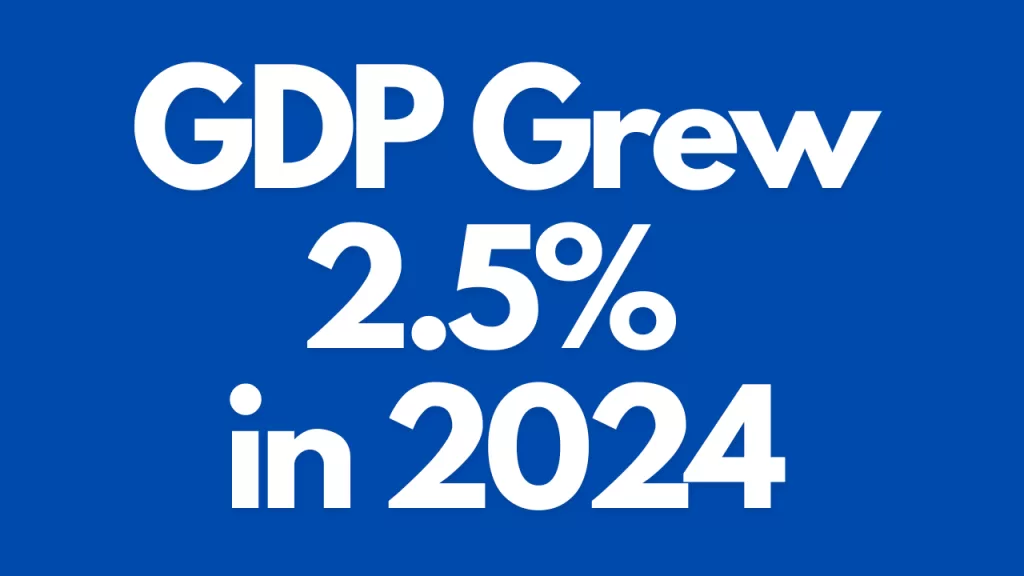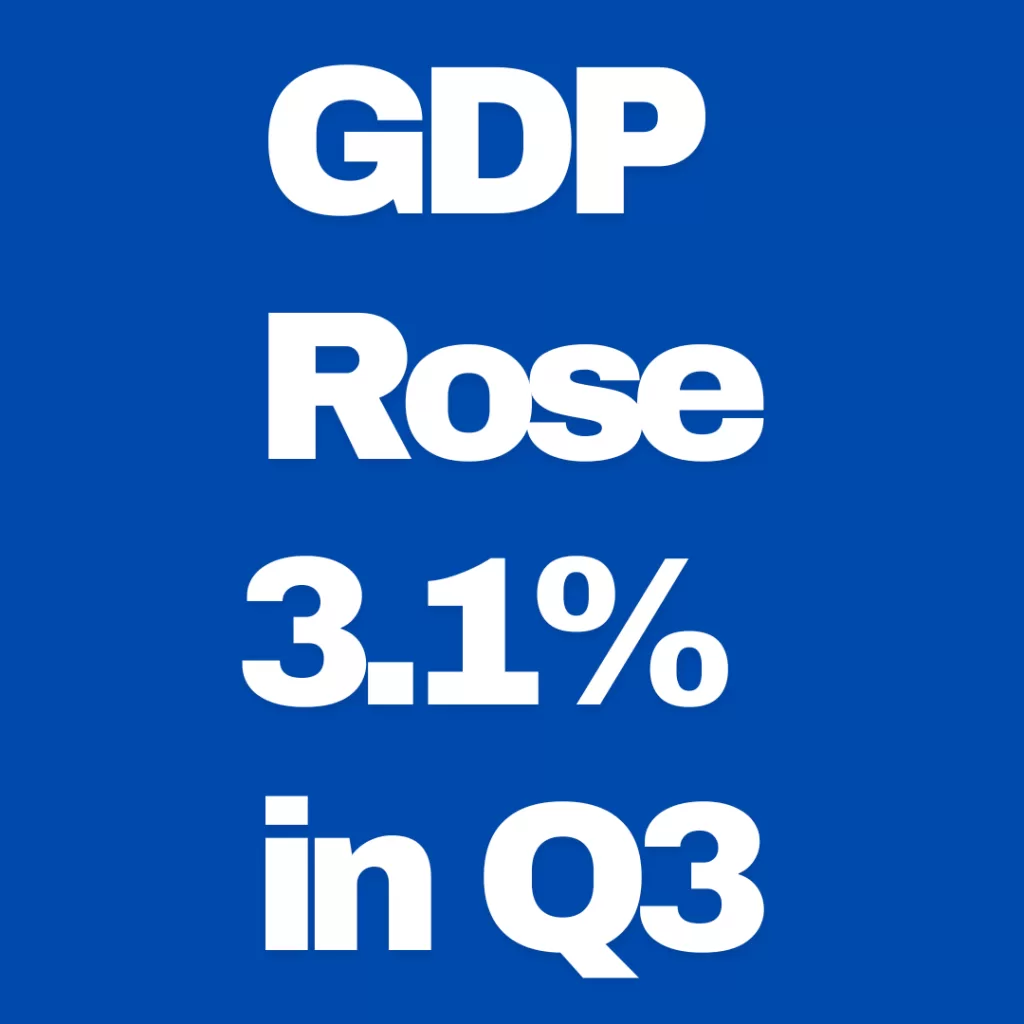US GDP Grew 2.5% in 2024: Resilience Amid Uncertainty
The U.S. economy demonstrated robust growth in 2024, with gross domestic product (GDP) expanding by 2.5%, according to the latest government data. Despite global economic uncertainty, fluctuating interest rates, and shifting labor market dynamics, the economy managed to sustain moderate yet steady growth throughout the year.

Key Drivers of Growth
Several factors contributed to the 2.5% expansion in GDP. Consumer spending remained a key driver, buoyed by a resilient job market and rising wages. Although inflationary pressures persisted, cooling price increases allowed households to maintain purchasing power. The services sector, particularly travel, hospitality, and healthcare, experienced strong demand, further supporting economic activity.
Business investment also played a role in GDP expansion. Companies continued to allocate capital towards technology, automation, and supply chain enhancements, strengthening productivity and long-term growth prospects. Meanwhile, federal spending, particularly in infrastructure and clean energy projects, added further momentum to economic expansion.
Challenges and Headwinds
While the economy posted solid growth, it was not without challenges. Higher borrowing costs, resulting from the Federal Reserve’s restrictive monetary policies, weighed on sectors sensitive to interest rates, such as housing and commercial real estate. Additionally, global supply chain disruptions and geopolitical tensions created volatility in trade and commodity markets.
Labor shortages in certain industries also posed constraints, leading businesses to invest more in workforce training and automation to mitigate hiring difficulties. The labor force participation rate remained stable, but demographic shifts and evolving workforce trends continued to shape labor market dynamics.
Outlook for 2025
Looking ahead, economists remain cautiously optimistic about 2025. While growth is expected to moderate slightly, ongoing investments in infrastructure, innovation, and clean energy could provide long-term benefits. The Federal Reserve’s policy stance will be closely watched, as any shifts in interest rates could impact consumer spending and business investment.
Overall, the 2.5% GDP growth in 2024 underscores the resilience of the U.S. economy. Despite global and domestic challenges, strong consumer demand, business investment, and strategic federal policies have supported expansion, setting the stage for continued economic stability in the years ahead.

